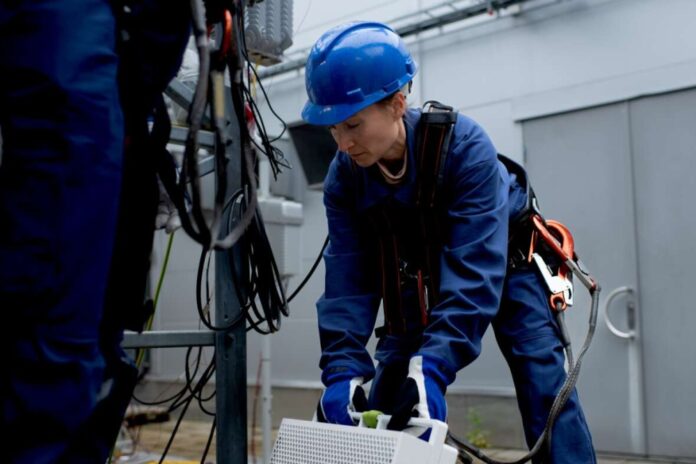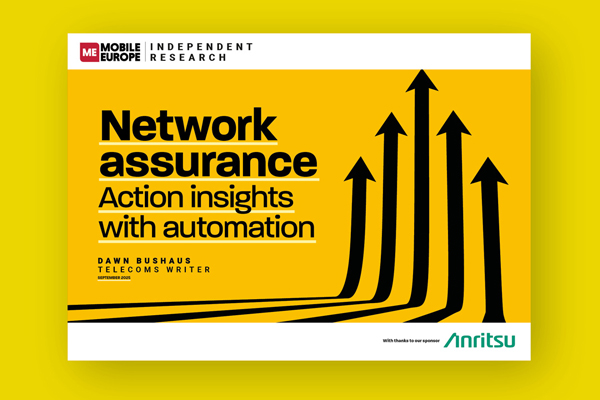Dell’Oro data reveals stabilising conditions across key segments, with EMEA contributing to positive momentum
After enduring two years of steep declines that left the mobile infrastructure market in a prolonged hiatus, new data from Dell’Oro Group suggests the sector is finally looking up. The research firm’s latest quarterly reports paint a picture of cautious optimism, with RAN revenues growing for three consecutive quarters outside China, 5G mobile core networks surging 31 percent year-on-year, and even the somewhat unloved Open RAN segment showing signs of stabilisation.
The RAN market, which bore the brunt of the industry’s recent struggles, has demonstrated terminator-like resilience in the second quarter of 2025. Total RAN revenues, encompassing baseband, radio hardware and software but excluding services, continued their upward trajectory for the third straight quarter. This sustained growth represents a significant departure from the precipitous declines that characterised 2022 and 2023.
“Our initial assessment confirms that the narrative we’ve been discussing for some time is now coming to fruition,” said Dell’Oro VP of RAN market research Stefan Pongratz. “Market conditions have continued to stabilise, resulting in growth for three consecutive quarters outside of China.”
Europe doing ok
The European market, alongside the Middle East and Africa, has emerged as a key driver of this recovery. Growth in the EMEA region nearly offset declines elsewhere, including the Caribbean, Latin America and parts of Asia Pacific. This regional strength underscores Europe’s continued importance as a stabilising force in global telecoms infrastructure spending, even as operators navigate ongoing economic uncertainties and the complexities, not to mention the cost, of 5G deployment.
However, Pongratz cautioned that “broader market sentiment remains subdued, and a rapid rebound is not anticipated.” The industry consensus suggests that short-term fluctuations are unlikely to fundamentally alter what remains a generally flat long-term trajectory for RAN investments.
The vendor landscape continues to evolve, with Dell’Oro identifying three major trends reshaping competitive dynamics: the strong are getting stronger, laggards are not improving, and the market is becoming increasingly divided. This consolidation is evident in the concentration of market power, with Ericsson and Huawei together accounting for more than 60 percent of their respective regional markets in North America and China during the first half of 2025. The global top five RAN suppliers, based on worldwide revenues for the trailing four quarters, remain Huawei, Ericsson, Nokia, ZTE and Samsung.
Open RAN mixed
While the traditional RAN market shows signs of recovery, the Open RAN segment presents a more complex picture. After cumulative revenues approached the $10 billion milestone, the segment experienced a sharp correction, declining by roughly 40 percent within two years as activity outside early adopters failed to compensate for slowdowns in the United States and Japan. The pace of this deceleration proved sharper than anticipated, partly due to weaker overall 5G investment levels.
Yet preliminary data from the second quarter suggests Open RAN may be finding its floor. Revenues grew year-over-year in 2Q25 and were nearly flat for the first half of the year, supported by easier year-on-year comparisons, stronger capex tied to existing deployments and increased activity among early majority adopters. Dell’Oro maintains its long-term optimism for Open RAN and Cloud RAN, particularly in the latter part of the forecast period, though multi-vendor RAN adoption remains limited.
The research reveals a concerning trend toward market concentration across regions, with the RAN market now classified as “highly concentrated” using the Herfindahl-Hirschman Index in five of six tracked regions. This provides further evidence that the supplier diversity element of the Open RAN vision is fading, even as technical progress continues with the open fronthaul interface becoming an increasingly important requirement.
In the virtualised RAN space, Samsung leads the global rankings based on worldwide revenue for the second quarter, followed by Rakuten Symphony and Fujitsu. Dell’Oro projects virtualised RAN revenue will grow in 2025, while multivendor RAN deployments are expected to reach between $2 billion and $3 billion by 2029.
Core crushes it
The most encouraging news comes from the mobile core network segment, where robust growth of 19 percent year-over-year in the second quarter was driven primarily by 5G deployments. The 5G mobile core network segment alone posted an impressive 31 percent increase, while voice core networks contributed an additional 18 percent growth.
“With the strong growth we have now seen in the first two quarters of the year, we are doubling the growth rate for 2025 to 10 percent year-over-year,” said Dell’Oro research director Dave Bolan. This upward revision reflects growing confidence in 5G standalone deployment momentum.
The acceleration is being fuelled by increasing 5G Standalone subscriber adoption and new network launches by mobile network operators. Dell’Oro has identified 71 mobile network operators that have launched 5G SA services for consumers, including five new launches in 2025 alone. Many more operators have 5G SA networks in development for deployment over the coming years.
Bolan highlighted the maturing ecosystem around 5G SA networks, pointing out the emergence of new elements like New Radio reduced capability technology, which reduces the cost and complexity of 5G SA IoT devices. “NR RedCap reduces the cost and complexity of 5G SA IoT devices, which will add to the uptick of devices connecting to 5G mobile core network, such as smartwatches and AR glasses,” he said.
The somewhat maligned network slicing capabilities are also gaining traction, with dynamic slicing providing on-demand performance for specific use cases such as venue-based services or wireless broadcasting, while static slicing supports fixed wireless access and mission-critical services requiring consistent performance enhancements.
The analysts suggest cloud-native transformation is extending beyond 5G networks into voice services, as mobile network operators begin upgrading their voice cores to cloud-native IMS implementations. This transition is contributing to the 18 percent growth in the voice core segment, with Voice over NR deployments providing additional momentum for 5G mobile core growth.
Multi-access edge computing, a subsegment of the 5G packet core, demonstrated particularly strong performance with 32 percent year-on-year growth in the second quarter, and Dell’Oro projects 44 percent growth for the full year 2025. This reflects growing operator interest in edge computing capabilities as 5G use cases mature.
Same vendors
The vendor rankings for mobile core networks remain consistent globally, with Huawei, Ericsson, Nokia and ZTE maintaining their positions both worldwide and in markets excluding China. This stability in vendor positioning contrasts with the more dynamic shifts occurring in the RAN market.
For EMEA operators and their vendor partners, these trends identified by Dell’Oro point to a period of cautious optimism ahead. The region’s contribution to RAN market stabilisation, combined with the broader momentum in 5G core deployments and the gradual recovery of Open RAN investments, provides a few paths for growth and related investment. However, the industry’s acknowledgment that rapid rebounds remain unlikely suggests that sustained, measured investment strategies will be more important than dramatic spending increases.
The convergence of these positive indicators across multiple segments still represents the strongest sign yet that the mobile infrastructure market’s painful adjustment period may be drawing to a close but many are not going to call it given how sluggish the consumer handset market is.
While challenges remain, particularly around the competitive dynamics of Open RAN and the long-term sustainability of current growth rates, at least the foundations for some sort of recovery appear increasingly solid.




